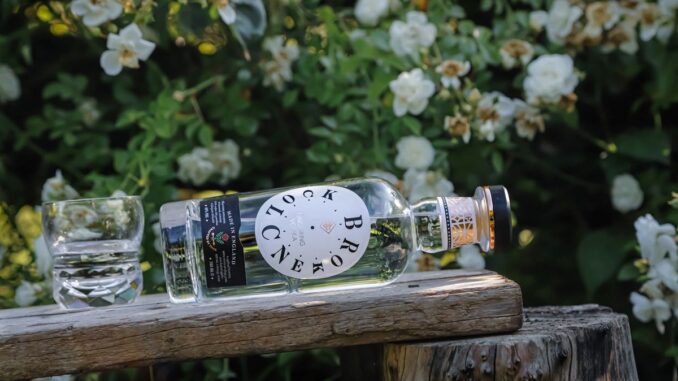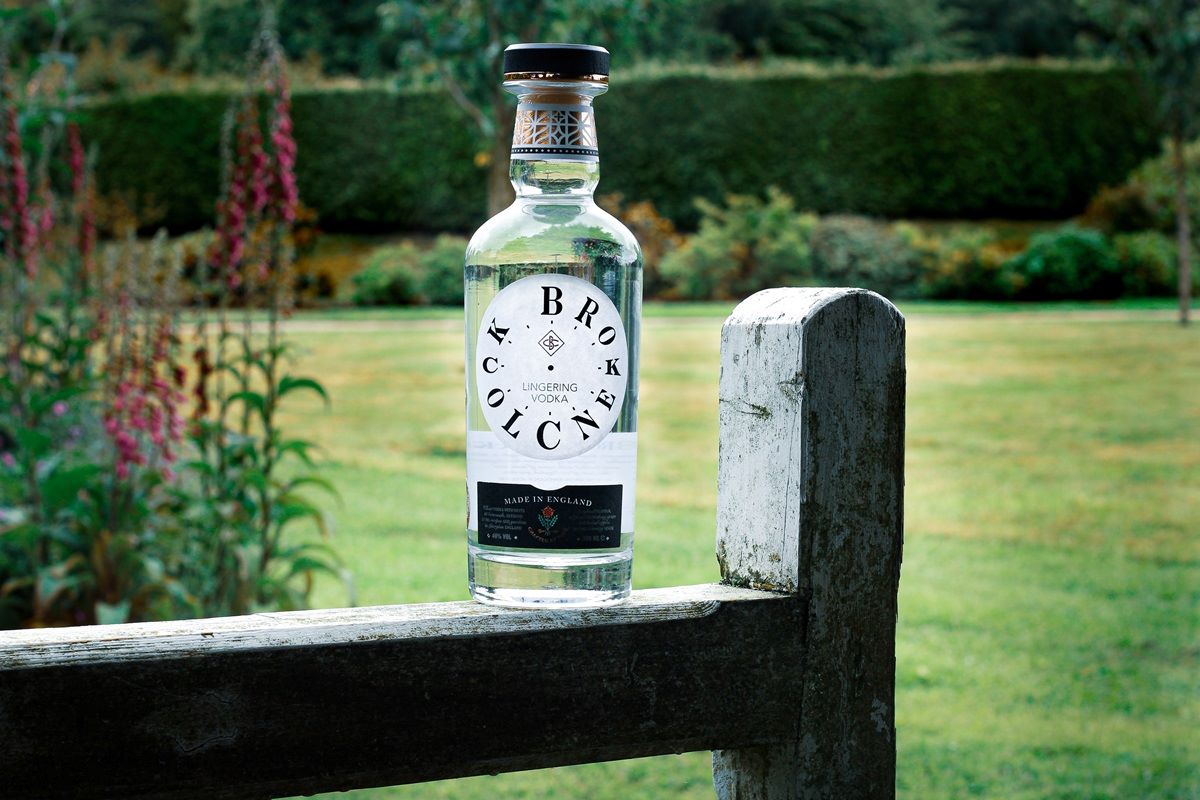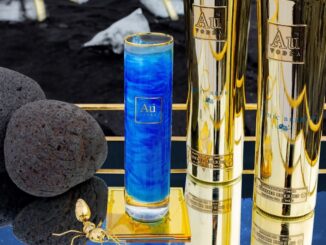
Leon Kuhajewski invented the world’s first astronomical watch in 1816. One of his descendants, Andrew Kugaevskikh, invented a distinctly bookish and very Anglo-Irish Polish vodka.
And a drink which is the uniquely fruit of cross-Pennine collaboration between Yorkshire and Cheshire. Broken Clock Vodka is made in Cheshire, using one of Ireland’s greatest humourists as inspiration and relying on Yorkshire for its vital ingredient.
Born in Poland and Russia-educated drinks entrepreneur Andrew says:
“I am a big fan of Laurence Sterne’s ‘The Life and Opinions of Tristram Shandy, Gentleman’. I discovered it by chance. My wife wanted something to read. I read it before her and was entranced.
“I visited Sterne’s home, Shandy Hall, fifteen miles from York in north Yorkshire. I loved the place. Time seemed to stand still. Newburgh priory’s clock was broken. Thus, the name. I have worked in the drinks business for a long time, but Shandy Hall gave me the last ingredient for my own vodka. In Laurence Sterne’s back garden, in his orchard I discovered newly ripened windfall apples. And Broken Clock Vodka was born.”
The vodka using long-established Bramley, Crab and Keswick Codling apples from Rev Sterne’s garden has just won the Best Vodka Brand award as voted by British Bartenders. It was the only vodka among many high-profile vodkas to win a gold medal for taste.
A former fashion company manager and English and PE teacher in Stratford on Avon and York, Patrick Wildgush has been the Hall’s live-in manager and curator of the world’s largest collection of Sterne editions since 2004. He was played by Stephen Fry in Michael Winterbottam’s 2006 film A Cock & Bull Story.
“I posted Andrew three boxes of windfalls. We make juice from them. Being a fan of Sterne anything irregular interests. And anything to spread his words, promote and celebrate his work and this part of the world is worthwhile. Time wastes too fast as Sterne said.
“Sterne believed in chance. That was his big thing. So, when the request came in for some apples to make a vodka I thought: why not? I don’t drink but I am told it’s a very good vodka. I am sure the vicar would have approved. In north Yorkshire dialect, Shandy means odd or crack-brained!
“He was an extraordinary man. He was painted by Reubens, and he preached to Diderot. He was very famous. In a short space of time this Yorkshire parson became a London celebrity. We hold events and exhibitions in which artists respond to his unusual method of storytelling. Artists like the ridiculous in him. He is very popular in Germany. We did a reading in Berlin, and they were falling about. On the floor with laughter.”
The Lawrence Sterne Trust, established in 1967, is more in need of funds than ever. You can stay at Wolfson Cottage, a converted 19th century stone barn in the grounds of the parsonage. It looks over the Hambleton Hills.
Sales director, Alex Griem, who used to work for the Revolution vodka bar chain, said:
“It’s a vodka made in the North of England. An English vodka is a contradiction in terms. As vodka isn’t English. But we hope our vodka tastes how an 18th century vodka would have tasted. It harks back to yesteryear. Broken Clock is a tribute to the timelessness of an English garden. It is a vodka to sip and take your time over. Tristram Shandy is a masterpiece of procrastination which sums us up superbly.
“It took three years to finalise the recipe with the help of a hired still and 12 master distillers. The novel is eccentric and unconventional and not put together in the obvious, expected way. Like our vodka. We focus on the heart of the spirit. The apples are halved and steeped. We don’t call it a flavoured vodka but a characterful vodka.”

Born in Clonmel. Co Tipperary, the son of a soldier, Laurence Sterne was educated at Hipperholme Grammar School near Halifax in Yorkshire and Jesus College Cambridge, where his great-grandfather, an Archbishop of York, had been Master. Sterne was ordained in 1736 and served in several parishes before settling in 1760 in Coxwold in North Yorkshire with his wife and daughter. He preached at the 1420 St Micheal’s Church. He wrote most of his books in Coxwold which is now part of the North Yorkshire Moors Park.
Laurence Sterne died in 1768 and was buried three times. Once in the graveyard of St George’s, Hanover Square, once when recognised after having been disinterred for anatomists and the last time when development took place on the London burial ground, his skull and a femur were taken to Coxwold and buried outside his old church. Most of his correspondence was burnt but the museum has some letters and manuscripts as well as tithe receipts, a table and a porcelain cow he brought back from France.
The Rev Sterne lived in Shandy Hall from 1760 to 1768. The first two volumes of Tristram Shandy were published in 1759. The Grade I listed building was originally a late medieval long hall built for a priest. It was extended by Sterne, becoming The Parsonage. It was restored in 1960. An archaeological dig in 2006 confirmed that Coxwold was a centre for pottery making and that Shandy Hall formed part of a whole system of medieval buildings which ran along that side of the village. In the 1880s a plaque was placed above the door. It was used as a teahouse and farmhouse before being bought by the Trust. Nearby attractions include Rievaulx Abbey.
According to contemporary accounts Sterne was a popular vicar with the church scarcely able to contain the large number of people that appeared every Sunday. On 20th September 1761 Sterne and his churchwardens bought from Chapman a Scotch ox which is to be roasted whole in celebration of the coronation of George III which took place in Westminster Abbey on 22nd September.
The house is surrounded by two acres of gardens, half walled and formal while the rest set in a disused quarry. Sterne wrote:
“I am as happy as a prince at Coxwold and I wish you could see in how princely a manner I live – ‘tis a land of plenty.”
Griem added:
“We specifically created Broken Clock Vodka to be a spirit steeped in traditional craftmanship and classic English flavours. It’s full of apple, bergamot and Earl Grey!”
“The bottle design is based on the shape of an antique bottle we found near the distillery and the design is largely made up of original 18th and 19th century fonts and typefaces. Under the pot metal cap is a ‘welcome to the garden’ quote in a William Morris font and under the bottle itself is an English rose emblem – a key component of any English garden.
“Marketing experts shook their head at something that could only be seen after you bought the bottle rather than before it!”
In the Sterne’s day, the word vodka was used to refer to bread wine or any drink flavoured with herbs, berries, fruits and even wood additives.
Broken Clock advocates recommend a Brokeroni cocktail dedicated to Count Camillo Negroni. It consists of red vermouth and red berries. A Windfall Mule and Guelder Rose should also be tried and lingered over. A Vodka Shandy can’t be far off.
For more information on Broken Clock Vodka, please visit: www.brokenclock.co.uk.
Author Bio:
Kevin Pilley is a former professional cricketer and chief staff writer of PUNCH magazine. His humour, travel, food and drink work appear worldwide, and he has been published in over 800 titles.
Photographs courtesy of Broken Clock





Be the first to comment